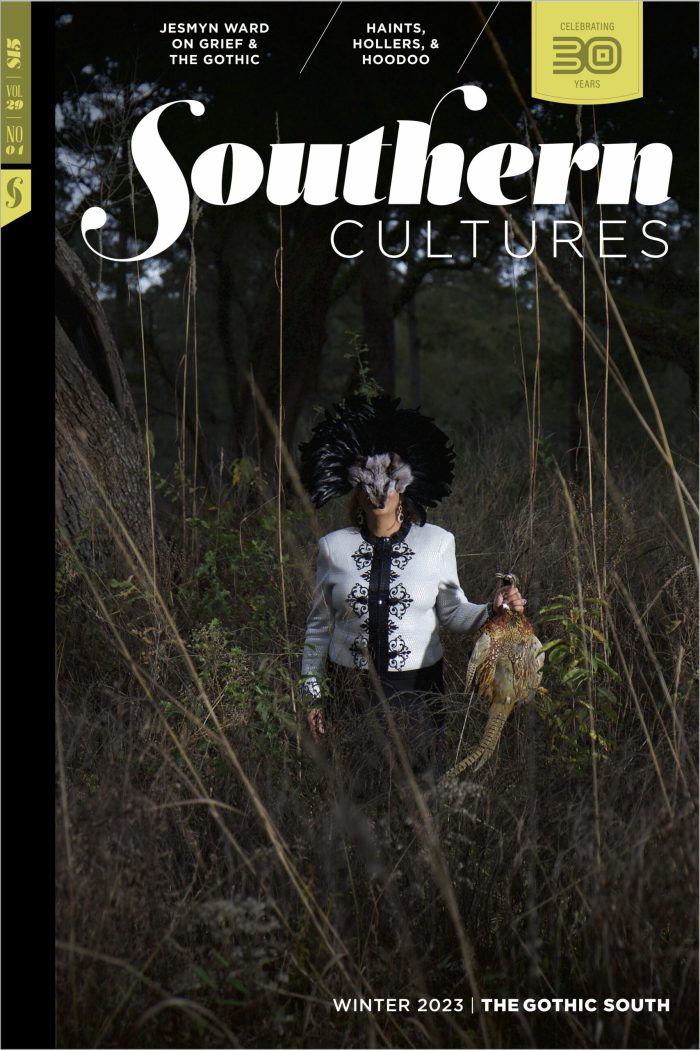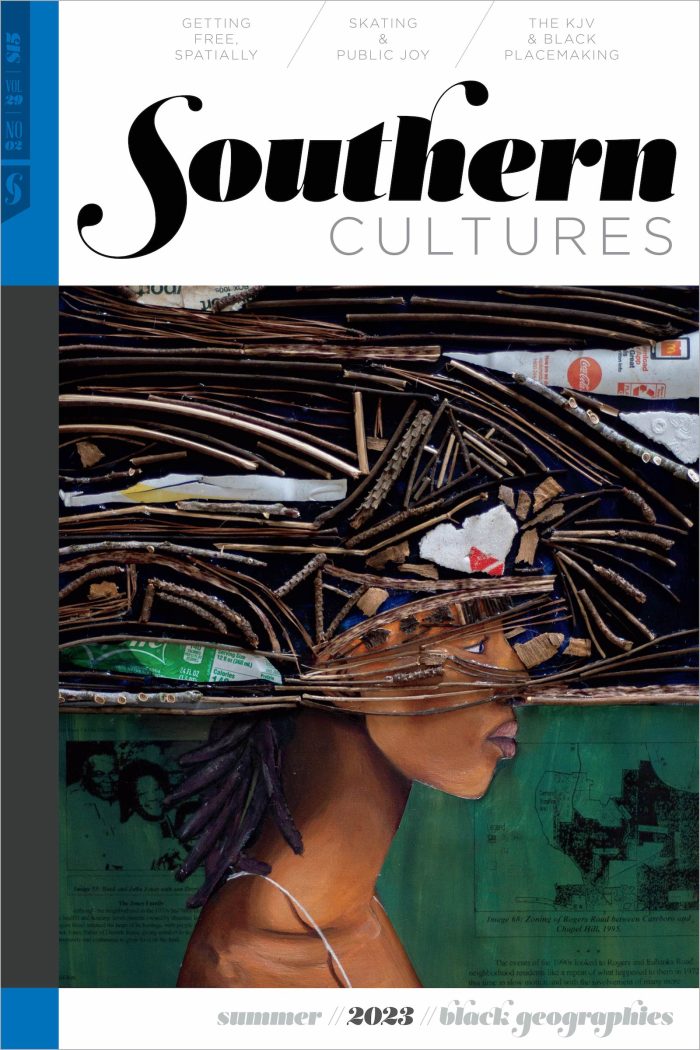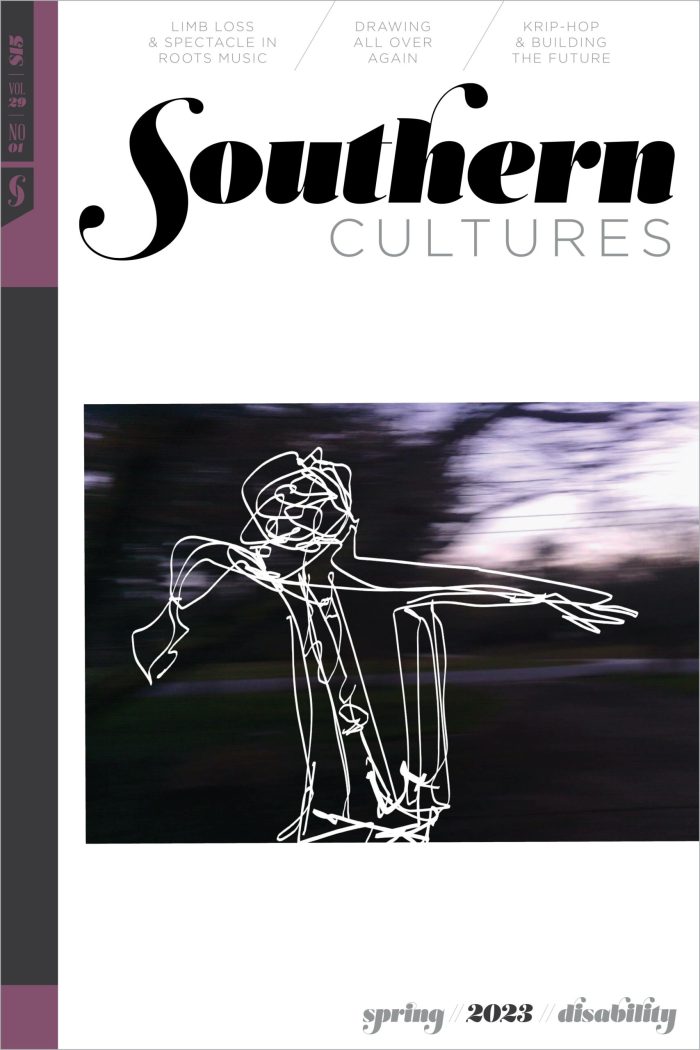BUY ACCESS
by Harry L. Watson
Ancient avenues of live oaks. Family traditions. Heirloom furniture. Historic roots. A sense of place. The familiar catalogue of clichés about the stability, indeed, the immobility ofsouthern life comes easily to mind. Ever since the days of the plantation romances, southerners have been widely imagined as stationary in time and space, passing up the hubbub »
BUY ACCESS
by Theda Perdue
“The author uses two legendary figures to explore sex, culture, and power in the conquest of the South.” As icons of the European colonization of the Americas, Columbus and Pocahontas represent opposite sides of the experience—European and Native, invader and defender, man and woman. Biographies and other scholarly writings document their lives and deeds, but »
BUY ACCESS
by T. H. Breen
“Over two centuries ago the Moravians made their way into North Carolina on the Great Wagon Road. Their pathway has shaped personal and regional histories ever since.” This is the place you’re looking for,” Darrell Lester shouts, standing in the middle of a small cow pasture. Behind him flows the south branch of the Mayo »
BUY ACCESS
by David Goldfield
“Though their relationship with the South has often been ambiguous, Jews have made a home for themselves in the region.” As quintessential outsiders, Jews have developed a sixth sense in taking cues on public behavior from the host society. Over the centuries, their successful assimilation and at times even their survival have often depended on »
BUY ACCESS
by Julius Rowan Raper
Westview Press, 1996 Finally it is official. Our mothers and fathers warned us it was true. The playground bully showed us it was true. Newspapers, magazines, and television told us so. Over and over, Glasgow, Wolfe, Caldwell, and Faulkner convinced us ofit. Now that two social scientists have proved it, it must surely be the »
BUY ACCESS
by William A. Link
HarperCollins, 1994 For the past half century or so, scholars and social critics have sought to understand the often ambiguous relationship between sectionalism and nationalism. Examining a unique cluster of political, economic, cultural, and geographic factors, students ofthe South in particular have asked how much and to what extent uniquely regional characteristics have survived into »
BUY ACCESS
by Tonita Branan
Texas A&M University Press, 1996 The five essays in Southern Writers and Their Worlds confirm literary critic Jefferson Humphries’s assertion that “it is no longer possible to separate the literary from the historical.” Specifically, each piece in this volume assumes the same goal: to untangle the precarious relation between a text and its author’s expressly »
BUY ACCESS
by Sarah H. Hill
University of Georgia Press, 1994 In this rich and dense volume, Charles Hudson and Carmen Chaves Tesser have brought together anthropologists, archaeologists, and historians to reconstruct the world of southeastern interior American Indians in die two centuries between initial Spanish contact and the English founding of Charles Town. These are forgotten centuries, according to the »
BUY ACCESS
by Charles G. Zug III
The Museum of Early Southern Decorative Arts in Winston-Salem, North Carolina, distributed by the University of North Carolina Press, 1994 Long ignored for their primitive methods, relative isolation, and utilitarian output, southern potters have staged a remarkable comeback over the last two decades. The living tradition continues in numerous small, family-run shops across the Southeast, »
BUY ACCESS
by Judith E. Funston
University Press of Kentucky, 1995 “Women knew that a land where men were contented, uncontradicted and safe in possession of unpunctured vanity was likely to be a very pleasant place for women to live. So, from the cradle to the grave, women strove to make men pleased with themselves, and the satisfied men repaid lavishly »
BUY ACCESS
by Janette Thomas Greenwood
University of Georgia Press, 1995 Kent Anderson Leslie’s recent monograph, Woman of Color, Daughter of Privilege, contributes to a small but growing body of literature that addresses the experiences of racially mixed people in both the Old and New South. A group that seldom fit neatly into the South’s carefully delineated, bifurcated racial order, mixed-race »
BUY ACCESS
by Steven F. Lawson
G.P. Putnam’s Sons, 1996 The appearance of Alex Haley’s Roots as a television miniseries in the 1970s stimulated many black Americans to search for their family origins in slavery and Africa. A similar passion drove a group of Floridians to excavate the layers of sediment that kept hidden from all but a few of their »
BUY ACCESS
by Robert Coles
Algonquin Books, 1995 From title to last page, Constance Curry’s book offers testimony to the ingenuity and resourcefulness, the moral imagination of certain hard-pressed black people in the rural South. These individuals stood up to the overwhelming power of landowners and sheriffs and politicians, enduring slurs and threats and bullets and clubs so that a »
BUY ACCESS
by John Shelton Reed
One form of “race-mixing” that both Black and white southerners have long viewed with unconcern or even with pride has been intermarriage (perhaps preferably in the remote past) with the South’s Native American population. Southern families from the First Families of Virginia to the Presleys of Tupelo, Mississippi, have believed themselves descended from Indian ancestors, »
BUY ACCESS
by James G. Ferguson Jr.
“Ducloux was in ecstasy as he devoured the next five biscuits.” Last summer I had the good fortune to audit a course on the sociology of the South at the University of North Carolina at Chapel Hill. Actually, it was a bit of an intellectual breather from five-years work on an increasingly ponderous tome concerning »
BUY ACCESS
by David Moltke-Hansen
Southern studies are at a critical juncture. Old interests and paradigms are losing their hold; new ones are emerging but have yet to dominate. Novel forms of academic communication and publication are multiplying. Never before have southernists had the intensity and number of interactions now proliferating on the Internet. As a result, the field is »
BUY ACCESS
by Floyd Waldrep
“The soldiers unloaded from the train like a colony of ants and invaded the watermelon patch like soldiers in battle.” Everyone was talking about a troop train coming, and that bothered me. I knew it should be a secret. After all, a German spy might be lurking nearby. I knew this train was important because »





